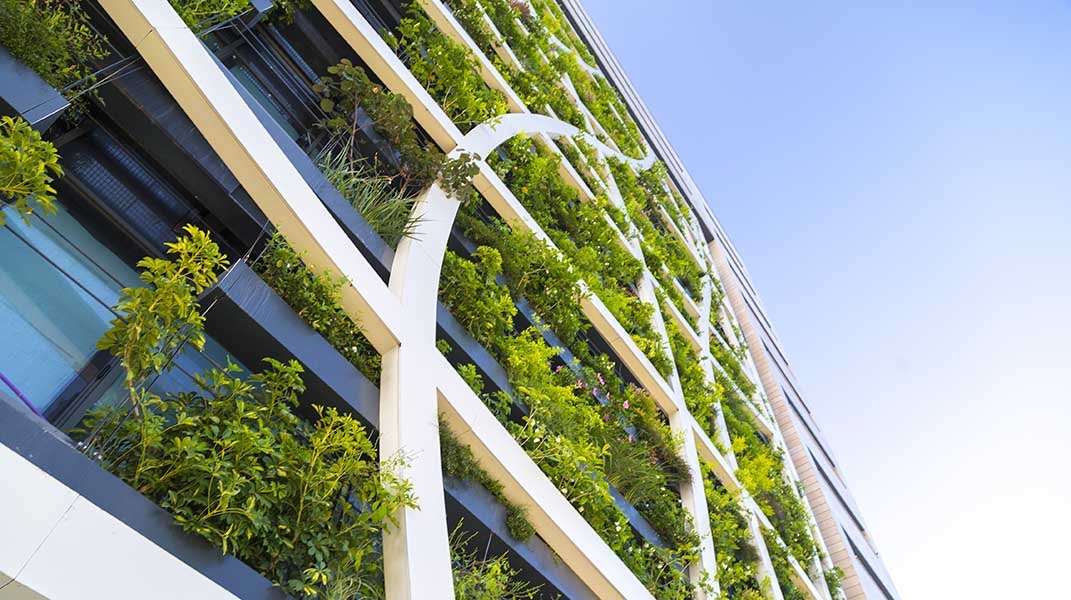How biotechnology could revolutionize the construction industry

What are the most environmentally damaging industries? In the U.K., construction tops the list.
That’s according to the Waste & Resources Action Programme (WRAP), which estimates that 33 percent of the country’s waste and 45 percent of its CO2 emissions come from construction. But one London startup is aiming to change that.
The invention of bio-concrete is evidence of the vast potential that organic materials offer construction and countless other industries.
Biohm, which was founded in 2016, is a biotech lab that’s figured out a way to use biodegradable materials such as cocoa husks, dried orange peels, and ground blue pea flowers to create sustainable construction materials. The researchers behind the startup have created two products:
- Orb, a cork-like building material made with organic food waste
- Mycelium insulation, a heat-trapping material made with filaments from mushrooms and fungi
Mycelium insulation is not only more effective than synthetic alternatives, it sequesters carbon itself. Three thousand square meters of mycelium insulation is enough to suck 16 tons of carbon out of the atmosphere, the company estimates. “Just by creating the material, we’re having a positive impact,” Biohm founder Ehab Sayed told The Guardian in January.
Biohm has partnered with local offices and airports that pay it to collect their waste, which is then processed in Biohm’s labs. Customers who buy the sustainable materials are then asked to return the materials to the company when they’re finished using them, so they can re-enter the life cycle rather than go straight to the landfill.
As a field, biotechnology offers countless solutions to common environmental problems well beyond the construction industry. A number of labs and startups across the world are looking into ways to use living organisms and organic waste to create materials that would otherwise be built using lumber, oil-derived plastic, or other environmental resources.
North Carolina’s Biomason is among them. The company, founded in 2012 out of the Research Triangle, is making cement out of bacteria using carbon-neutral processes. Founder Ginger Dosier and her husband, Michael, blast grains of sand with micro-organisms and grow it into a coral-like material strong enough to use in residential and commercial buildings. To keep things as sustainable as possible, all water used in the process of creating a batch of bricks is reused to make the next one.
The startup offers a valuable alternative to the carbon-intensive process of brickmaking. Traditionally, creating bricks requires extracting clay from the earth and blasting it in a kiln at 2,000 degrees Fahrenheit, releasing carbon dioxide into the atmosphere (8 percent of the world’s carbon emissions come from brickmaking, the EPA estimates). In contrast, Biomason’s process requires no kiln or firing. The product’s efficiency has impressed the likes of the U.S. Air Force, which has partnered with Biomason to create sustainable plane runways.
But what happens when buildings wear out, become damaged, and need to be rebuilt? One Dutch research lab has a biotech-based solution for this: self-repairing bio-concrete.
Microbiologist Henk Jonkers at the Delft University of Technology combined regular concrete mix with a limestone-producing bacteria (or “healing agent,” Jonkers calls it) that remains dormant until combined with water. When cracks enter concrete, water naturally seeps into them. With Jonkers’ bio-concrete, this process causes the bacteria-containing capsules to open and then germinate, multiply, react with the calcium in the concrete mix, and fill the gaps that have formed.
The result is a material with the potential to stand the test of time, eliminating the need to destroy and reconstruct buildings, a carbon-intensive process.
The invention of bio-concrete is evidence of the vast potential that organic materials offer construction and countless other industries, says University of Bristol Professor Ian Bond. “There's a lot more we could do with what we have,” Bond told the BBC. "We're only beginning to understand how nature does what it does with such basic materials."
